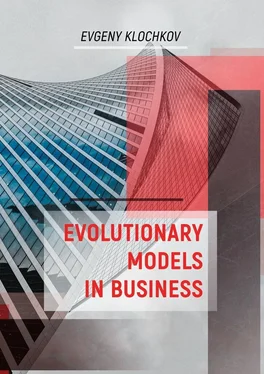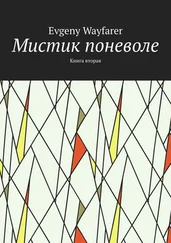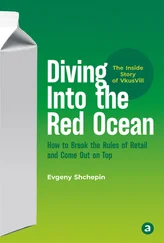Interspecies strugglemeans a competition for survival between individuals of different species. It has a complex nature and manifests itself in the following types of harmful and beneficial relationships:
a) competition means any antagonistic relationship associated with the struggle for existence, for domination, for food, space, and other resources between organisms, species, or populations of species that need the same resources;
b) predation means a phenomenon, where one organism feeds on the organs and tissues of another, while no symbiotic relationship is observed. It is worth noting that killing the victim is optional;
c) parasitism means a form of symbiosis, where one organism (the parasite) uses another one (the host) as a source of food and/or habitat, while imposing (partially or completely) the regulation of its relations with the external environment upon the host. There are also an obligate form of parasitism, when the parasite cannot exist without the host (e.g., viruses are a typical example), and an optional form of parasitism (e.g., lice, fleas, parasitic worms, etc.);
d) commensalism means relations, where one species, without damage or benefit to itself, contributes to the prosperity of another species (for example, sheep and cattle spread plant seeds on their wool);
e) mutualism means relations, when two species mutually support each other (for example, insects and birds pollinate flowers; cereals and legumes contribute to the growth of each other in grass mixtures).
Intraspecific struggleincludes the relationship between individuals of the same species with similar needs for food and territory. It is of the most acute character, since representatives of one species, especially one population, require the same conditions for life and reproduction of the offspring. For example, red cockroaches completely displace black ones, a gray rat displaces a black one, a European bee displaces an Australian one. Competitive intraspecific relationships are widely known everywhere. Birds of the same species compete over nesting sites. Males of many species of mammals and birds enter into a struggle with each other for the possession of a female during the mating season. An excessive increase in the population size exacerbates the struggle for food, therefore, for example, cannibalism, i.e. eating individuals of one’s own species, is widespread among fish. In the process of evolution, many animals have developed certain adaptations that help them avoid competition with other individuals of their species, e.g. marking the boundaries of their site, life in herds, and threatening postures.
Fight against unfavorable environmental conditions.A huge number of plants are destroyed almost every year by late frosts, droughts, and sharp climatic fluctuations. The mass of seeds is carried by the wind into unfavorable conditions and perishes. Many animals die during severe winters with little snow. With a lack of oxygen in the water, fish are killed. The result of this struggle is the survival of individuals with the most favorable hereditary changes for the given living conditions. For example, desert plants have long roots and small leaves.
All of the above types of struggle for existence lead to the extermination of a huge number of individuals or to the impossibility of leaving offspring. As a result of natural selection, individuals who are most adapted to the environmental conditions in which this species lives, survive. At the same time, there are no organic forms absolutely perfectly adapted to the conditions of their life in nature. This is impossible given the variability of the environment. Having become of no use, organs that were originally formed under the influence of natural selection, can show great variability under the influence of new environmental factors. When the conditions that formed this sign alter, it may turn out that what was useful will become harmful. Therefore, the idea of relative expediency in organic nature arises. The evolutionary process is always adaptive. The polar bear can serve as an example of survival by natural selection. Under the conditions of low temperatures in the Far North, he has formed a special wool with hollow hairs that have high thermal insulation properties. The soles of their feet are lined with wool to prevent slipping on the ice and freezing. There is a swimming membrane between the toes, and the front of the paws is trimmed with stiff bristles. Big claws can hold even really strong prey. This is a necessary and sufficient condition for survival. Individuals with other mutations simply did not survive. They could not stand the harsh climatic conditions, competition with each other, and competition with other species.
However, in conditions of continuously fluctuating environmental parameters, adaptive mechanisms are not enough. Nature has provided for another way to adapt to external conditions, namely, generational change. This mechanism guarantees the survival of the species. An organism must be born, master the living space, bring in something new that is conducive to survival in the development of the living space, reproduce offspring, transfer this new acquisition to them, help them get used to the living space and die itself. Thus, the key idea of survival is that organisms must be in a state of constant adaptation to the pulsating external conditions, acquiring some mutations and passing them on by inheritance, thereby fixing effective survival mechanisms in the genetic code.
In the process of research, Ch. Darwin noticed and made another interesting practical conclusion, which is also applicable for the world of business: natural selection can be supplemented by artificial selection. In his work, he described the process of creating new breeds and varieties of cultivated plants with properties and traits over a number of generations tha are valuable to humans. As a result, artificial selection has received an important practical application, when breeders set a task and carry out selection according to several criteria, breeding plant cultures and animal breeds with given properties and characteristics. As one of the examples, Ch. Darwin speaks of farmers in Virginia whose pigs were all black. When asked why, they informed him that the pigs were eating dye roots (Lachnanthes), which caused their bones to turn pink and all but the black varieties lost their hooves. And one of the farmers added: “In each litter we select black piglets for raising, as only they have the undoubted opportunity to survive.” Gradually, this theory developed to stimulate further dynamic development of the science of selection, the theory of mutations, the theory of gene structure, and the molecular basis of heredity. Breeders obtain the necessary properties through targeted selection of starting material for breeding, hybridization, mass and individual artificial selection. For instance, when breeding animals, breeds with high productivity, vitality, resistance to diseases, and adverse environmental conditions are developed.
An amazing and expensive cat breed called the Savannah can be mentioned as an example of targeted breeding. Being a home variant of the wild serval, the savannah was bred in the 1980s. Wild cats have always been popular with the elite, and in order to protect the true cheetahs and leopards, breeders have created an alternative. The animal looks formidable and dangerous, but in fact it is affectionate and sociable. The first savannah was introduced to the world in 1986 by the Bengal breeder J. Frank. It was the result of crossing a true serval male with a domestic Siamese cat. And in 2001, the breed was officially recognized and registered.
Darwin’s theory has been criticized many times, but the idea that life developed rather than was created in a “ready-made” form does not raise doubts among the overwhelming number of scientists. One of the practical conclusions from the theory of evolution was the emergence of genetic algorithms proposed by
Читать дальше












